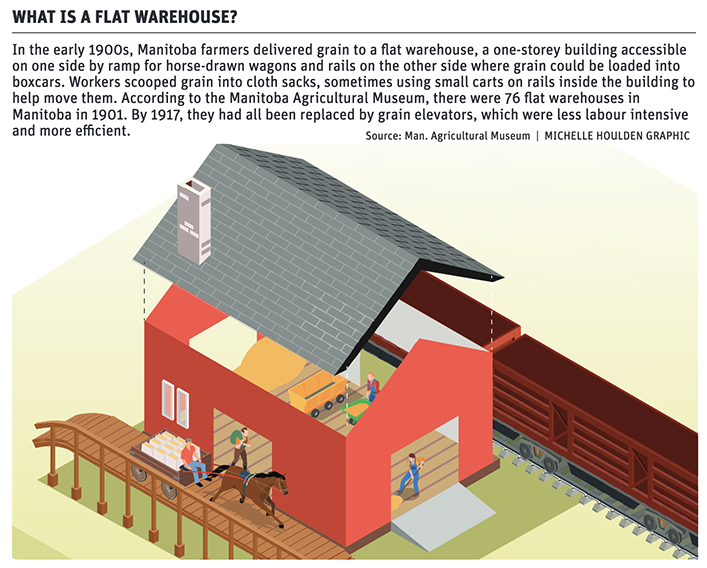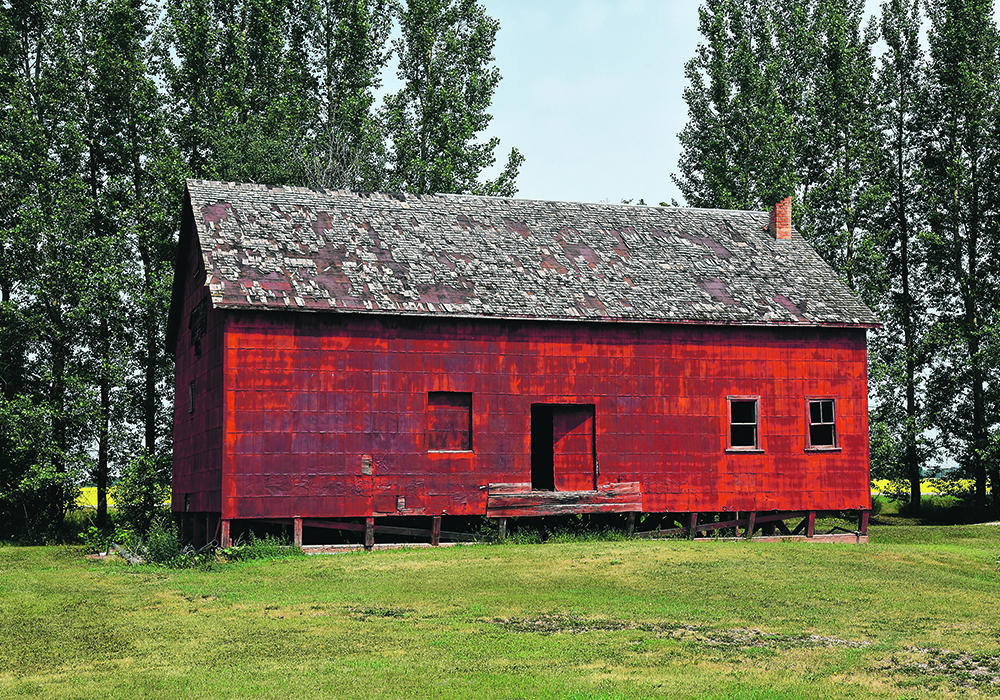Elevators replaced labour-intensive flat sheds on the Prairies, but one remains to be saved in southern Manitoba
Almost everyone on the Prairies knows what a grain elevator is, even as they gradually become less common, but few people know what a flat warehouse is.
The Manitoba Agricultural Museum wants to change that with their acquisition of the Brookdale Flat Warehouse. They are working to move it to the museum in Austin, Man., where they can restore it to its former glory.
“As far as we know, it is the last flat warehouse existing in Western Canada,” said Gordon Goldsborough, secretary to the board of the Manitoba Agricultural Museum.
Like elevators, flat warehouses sat next to the tracks. But while an elevator has machinery to move the grain around, the flat warehouse had only manual labour.
“Depending on if the farmer had the grain stored in bags, they would pick up the bags and carry them into the warehouse,” Goldsborough said.
If the grain was delivered loose, workers would use scoops to move it inside and dump it in piles. The inside of the warehouse contained a combination of stacked grain sacks and loose grain piles. To load a train, the process was reversed.
“They would pick up the sacks and they would bring a box car on the opposite side of the warehouse, open another big door there,” Goldsborough said. “Then they’d carry the bags of grain into the box car, or they would scoop the grain up and carry it and pour it into the box. It was highly labour intensive.”

Flat warehouses were more common in Europe, because by the time farming became established in Canada, the technology for elevators had already arrived.
“In 1902, at the time that the Brookdale warehouse was constructed, there were about 17 still in operation somewhere in Manitoba, but by 1917 there wasn’t a single one. They were all gone because elevators were just so much more efficient.”
The Brookdale Flat Warehouse spent most of its life as a warehouse for a hardware store. Now, it’ll return to its original configuration.
Goldsborough said a lot of work has to be done to make this happen.
“The building itself is in good structural condition, but if we don’t do something with the foundation it is very soon going to tilt over and collapse.”
They also have to replace the cedar shingles on the roof, as well as some of the metal panels on the outside.
“We would like to make it look like it would have when it was first built,” Goldsborough said. “And so in the inside, we would probably rebuild the walls that would have held in the grain. They would have various bins with different types of grain.
Plans are to move the warehouse to the museum in October, with the hopes of having at least the external repairs done by the Manitoba Threshermen’s Reunion and Stampede in 2022, which takes place at the end of July.
Goldsborough said the museum is currently raising funds for the project. Information on how to donate is available at mbagmuseum.ca.
















